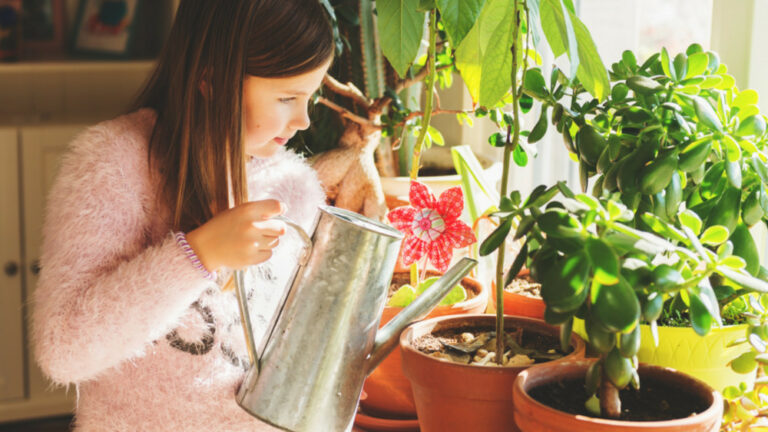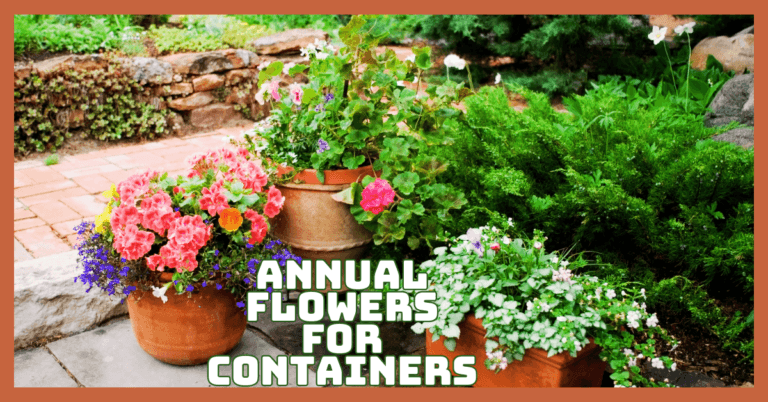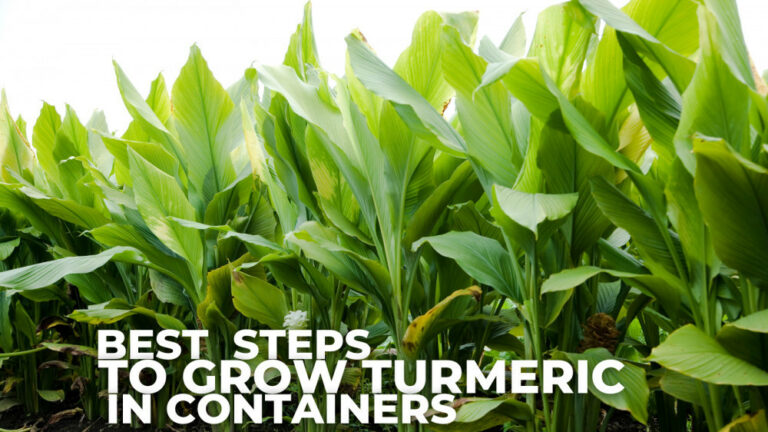Best Steps To Grow Grass In Containers
Best Steps To Grow Grass In Containers
The majority of us envision verdant carpet-like lawns and mansions a la Veneto. But ultimately, all we get is a typical two-bedroom flat with nothing more impressive than a balcony.
However, you can still partially realize your desire for a lush lawn. You may grow grass in pots by using container gardening.
So, you may plant grass in a container to give your apartment yard a green feel. Here are some simple instructions to grow grass in containers.
History & Origin Of Grass
When used to describe artificial land areas resembling natural meadows, the Middle English word launde initially referred to a meadow or opening in the woods.
The grasslands around medieval castles in France and Britain were among the earliest lawns. They keep these areas clean of trees so that guards can see approaching, possibly hostile, visitors without obstruction.
The name also referred to the “commons” of the hamlet or the meadows that were kept “in common” and shared by the people so they may graze their livestock.
As they fed, these hooved lawnmowers fertilized the grass and kept it trimmed. Discuss organic lawns.
Even though during the Renaissance of the 16th century, hay was less commonly sown on grounds in France and England than chamomile or thyme, these grounds were nonetheless purposefully kept up.
These two ground coverings are great grass substitutes for contemporary lawns. Significant, affluent landowners' residences in 17th-century England were where closely shaved grass lawns first appeared.
While sheep continued to graze on many of these parklands, landowners relied more on human labour to maintain the grass closest to their residences.
A lawn was a sign of wealth and status before lawnmowers since only the wealthy could afford to hire the numerous workers required to scythe and weed the grass.
It turns out that European nobility is where the grass lawn as a status symbol first appeared. Grassy meadows encircling English and French castles were the earliest lawns.
The grounds had to be kept clear of trees for the soldiers guarding the castle to have a clear view of their surroundings.
Enemies should not be able to approach the court covertly through the forest. Grasses spontaneously grew in the absence of trees, just as they do now in fields and clearings.
The Middle English term launde, a “glade or opening in the woods” where grasses were exposed to sunshine and allowed to run wild, originates from the word lawn. A typical location in the past was referred to as a “launde,”
A commonplace in a community where farmers might graze their livestock is referred to as laundry.
Fertilizer was also left behind by the sheep and cows when they “mowed” the lawn, guaranteeing that the grass would continue to flourish.
The word “grass” refers explicitly to the roughly 9000 kinds of plants that make up the plant family Gramineae.
On the grounds of the wealthy, such as at the renowned Versailles gardens in France, where “green carpet” (tapis vert) featured in André Le Nôtre's landscape design, grass lawns with the grass trimmed close to the ground began to appear by the late 17th century.
Types Of Grasses
The grass is a member of the about 11,000 species-strong Poaceae family of plants. But don't worry, when planning or naming your yard, you don't have to consider 11,000 different grass species!
In North America, however, around a dozen other species of grass are often utilized, and many lawns have a combination of two or more types.
You'll probably have problems keeping your property healthy if you choose warm-season grasses in a cooler region (or vice versa).
For this reason, it's a good idea to continue with the grass species best suited for your location before focusing even further on the species that provide the desired appearance and amount of upkeep. You should know about the best varieties to grow grass in containers perfectly.
1. Bentgrass
Due to its slow growth rate and smooth texture, bentgrass is a mainstay of northern golf courses.
Even though bentgrass has a velvety texture and a vibrant colour that would make it seem perfect for residential houses, bentgrass is fairly high care.
It needs frequent watering, fungicide application, and mowing. In such case, you might wish to avoid this dense kind unless you're running a fairway.
2. Bermuda Grass
Another typical choice for residences is Bermuda grass, which is also a favorite for golf courses.
Although this species requires much attention, including frequent watering, it can be mowed to a low height, making it perfect for yards with a lot of foot activity, such as children and pets.
It's a warm-season grass, yet many individuals in the central states, including the southern Midwest, have success growing it.
3. Bluegrass
The most common grass type for northern residences may be bluegrass, especially Kentucky bluegrass.
Although it doesn't like a lot of shade, bluegrass does well from seed and sod and can survive colder temperatures. It blends with ryegrass and fine Fescue.
4. Centipede
Centipede grass is appropriate for usage in warm, tepid regions, especially central states that don't typically fall into one specific temperature category.
It also creates a thick, mat-like turf with relatively minimal maintenance requirements. It does best with soil characteristics that can affect other grass varieties, such as high nitrogen levels, although it can also live in the shadow and loves the full sun.
5. Dichondra
Dichondra grass is simple to recognize since it resembles tiny spherical leaves rather than grass blades.
Although it is susceptible to disease and insects and needs frequent fertilizer and watering, homeowners in warm regions prefer this form of grass because it provides dense ground cover while still allowing for traditional grass cuts. It's most prevalent in California and Arizona.
6. Fine Fescue
“Fine fescue” refers to several different fescue family grass species, each with a thin, needle-like blade.
Fine Fescue, combined with Kentucky bluegrass and ryegrass, thrives in cooler climates and can endure shade but does not like the heat. The North Central and Northeastern states have a variety of this kind of grass.
7. Floratam
Another variety of St. Augustine grass, Floratam, is found in arid areas along the Gulf Coast. It has a wide, coarse-textured blade that many people in the South like, but it needs a lot of water and warm air to grow.
If you reside in a hot, humid climate (such as Louisiana or Florida), Floratam should be at home.
8. Ryegrass
This fast-growing grass is common on northern lawns and combines fine Fescue and Kentucky bluegrass.
It's typically relatively simple to maintain in milder states and germinates quickly for swift development.
However, it may struggle in freezing climates like northern Minnesota and Michigan (a big win when your growing season is short).
Grow Grass In Containers
When considering adding living vegetation to your indoor settings, the grass isn't typically the first thing that springs to mind among all the cool houseplants, beneficial herbs, and indoor trees available.
However, even though this kind of plant is typically associated with backyards and landscaping, the grass is an excellent alternative for an inside container garden because it is both aesthetic and practical and quite simple to grow.
Choose The Right Type
Pick the top grass seeds. You can now pick from a selection of grass. Wheat and ryegrass are common, but you can also choose an unusual flowering grass. The sources must be dry, not wet.
Container Requirements
Choose a container that suits your preferences. Grass can be grown well in a glass or metal containers.
Glass has a beautiful appearance because it creates a sharp contrast. Earthen pots are another option, but make sure they have adequate draining holes.
Add some gravel and stones to the container. This is necessary because growing grass requires soil that is well-ventilated and well-drained. The rock ensures that water does not pool and damage the tender roots.
Soil To Grow Grass In Containers
Grass primarily grows on topsoil. Usually, their little roots do not reach the earth's foundation.
Therefore, you must provide the grass seeds with at least 3 inches of rich topsoil. Layer it effectively without leaving too many air gaps.
Neither humus nor organic manure should be overly present in the soil. This boosts the soil's ability to hold water while making it too dense.
This causes the ground to keep excessive moisture, which is bad for grass.
Sunlight To Grow Grass In Containers
Most indoor grass species require a lot of light and thrive best when placed on a windowsill or in a room with lots of natural light.
If there isn't enough natural light in your home, artificial light from a growth lamp might be just as beneficial.
Watering
Watering grass is a challenging task. They require regular watering but control the quantity. Sprinklers are used to water lawns.
But because you're planting in containers, you need a different technique. Also, running sprinklers in your apartment's garden will be difficult.
A spray bottle works well for watering grass. This causes a cloud of mist to emerge from the water.
This watering ensures that water is distributed evenly and that your grass receives the right moisture.
Planting
Find a shallow container that is acceptable and has good drainage. As long as it isn't too deep or devoid of holes, it can be anything from a rectangle galvanized metal planter to a plastic tub to a terracotta pot. Gravel and pebbles can help if the grower you wish to use lacks drainage.
To help with water drainage, layer a layer of gravel or small stones in the bottom of the container between 12 and 1 inch thick.
Add a couple of inches of potting soil on top of the pebbles. Sprinkle the grass seeds on your soil. Once complete, use your fingers to press the seeds lightly into the soil.
Lightly water the seeds with your misting bottle until the soil is moist. Place your planter in a spot with lots of light after watering, and wait for your grass to grow!
Propagate Grass From Seeds
Numerous types of grass produce gorgeous flowering stalks that load with feathery seeds. The process of growing ornamental grass from seed is relatively simple.
Gather the source when it is dry, generally in the fall. Take the entire stem, and set the flower stalk in a cool, dry area to dry. Even if you can choose to keep them, fresh seeds have the best germination.
Scatter some sand on top of decent potting soil before surface sowing. Place the container in a plastic bag or on top of a plastic dome after watering it until it is evenly moist.
Since germination varies by species, move your seedlings into larger pots once they have two sets of genuine leaves. After hardening them off, install them in prepared pots or beds in the spring.
Propagate Grass By Division
There are other ways to propagate ornamental grasses besides seeds. The division is a more efficient and trustworthy way to multiply ornamental grasses. Dividing perennial plants has many advantages.
When the plant is about to dormant, you dig it up and cut it into two or more portions with healthy roots and leaves.
Make your cuts with clean, sharp tools, and throw away any seeds or material from dead or rotting plants.
As the disturbing piece settles into its new location, immediately replant it and keep it moist. You can do this every few years to add to your collection of ornamental grasses.
Variegated forms multiply through division to keep the variegation. Plain leaves will result from the proliferation of variegated ornamental grass. The attribute can only be kept by cloning the plant itself.
Fertilizer
Even if you utilize potting soil with a slow-release fertilizer, repeated watering could eventually result in nutrient loss.
It's a good idea to start routine fertilizer applications two to six weeks after planting a container, depending on the type of potting medium, how frequently you water, and how quickly your plants develop.
Pick the best fertilizer for fountain grass if you must fertilize your lawn. Organic fertilizers are suitable for the entire garden and are gentle and straightforward for plant roots to absorb.
Try organic soil additions like compost, leaf mould, mushroom manure, and other quickly degradable organic materials when deciding what to feed attractive grasses. You might also go with a simple 10-10-10 balanced diet.
Ensure the first number is no higher than 10, as doing so would provide too much nitrogen and harm the grass stems and blades.
It would help to determine how much fertilizer to apply after selecting the type to utilize. Early spring is the best time to fertilize fountain grass.
Care Of Grass
Every other day should be enough to sprinkle your seeds, and after a week or, in some circumstances, a few days, you should start to observe growth.
When the blades are about an inch tall, water sparingly and evenly every few days, ensuring the soil is damp.
You can use scissors to trim the tops of the blades as necessary once your grass has begun to grow significantly.
Whether you want a natural, free-form tuft or not will depend on whether you choose to complete this stage.
This will keep everything uniform and well-defined because blades can grow at varying rates. Your grass may endure many weeks to several months with weekly upkeep.
Pests & Diseases Of Grass
When growing decorative grasses, you could occasionally run into one of several different types of plant diseases.
After all, these plants frequently come from substantially drier ecosystems than those they encounter when growing!
Grasses and monocots seem more vulnerable to fungus-caused leaf spots and anthracnose infections than other greenhouse and nursery crops.
Additionally, Pythium and Fusarium spp.-caused root rots and rusts are frequent issues.
Hakonechloa is afflicted by Magnaporthe oryzae's gray leaf spot, while Panicum is susceptible to Bipolaris leaf spot (Bipolaris oryzae or B. zeae).
Miscanthus blight is a Leptosphaeria species-related disease. Rusts can be frustrating for growers of Panicum and miscanthus.
Several leaf diseases on ornamental grasses can start in the spring and last into the summer if temperatures are too high.
Treatment Of Pests When Present
To prevent spreading disease to your consumers, if you are a propagator, you should be extremely aware of disease symptoms and practice careful cleanliness.
- A leaf spot epidemic indicates that irrigation occurs too frequently, for too long, or both.
- When a species has a well-known leaf spot issue, fungicides are applied at the first indication of the leaf spot.
- Alternate between materials that have various effects (MoA). Look for FRAC codes on labels to identify which fungicides differ from one another in terms of their MoA.
- Utilize contact materials like copper, mancozeb, or chlorothalonil for leaf spots, rotating them with fungicides from FRAC Groups 3 and 11.
- For detailed information on the fungicides applied to each ornamental grass crop, consult the labels.
- Find cultivars that can function effectively without fungicides. Make a note!
- In the spring, when you're busy, check the foliage. Infested leaf spots are expected during the rainy springtime.
- Fall is crucial for rust infestations, so keep an eye on the grasses.
- Regularly check the condition of the grass's roots. For plants to thrive and survive the winter, healthy sources are essential.

Conclusion
If you decide to harvest your grass for use as a healthy food source, you should also cut it back to approximately a half-inch over the soil's surface.
Your grass may endure many weeks to several months with weekly upkeep. Feel free to comment here if you need any help growing grass in containers.
I trust you enjoyed this article on the Best Steps To Grow Grass In Containers. Please stay tuned for more blog posts to come shortly. Take care!
JeannetteZ
>>>Please click here to read my all-inclusive article about Container Gardening<<<
>>>Are you interested in homegrown herbs and medicine? Please click here to find out more about it!<<<
Your Opinion Is Important To Me
Thoughts? Ideas? Questions? I would love to hear from you. Please leave me your questions, experience, and remarks about this article about the Best Steps To Grow Grass In Containers in the comments section below. You can also reach me by email at Jeannette@Close-To-Nature.org.
Disclosure
This post may contain affiliate links. As an Amazon Associate and other affiliate programs, I earn from qualifying purchases at no extra cost to you. Read my full affiliate disclosure.
You might also enjoy these blog posts:
Best Steps To Grow Mushrooms In Containers
Best Steps To Grow Ocra In Containers
Best Steps To Grow Drumstick Alliums In Containers
Best Steps To Grow Ylang In Containers
Best Steps To Grow Cloves In Containers























